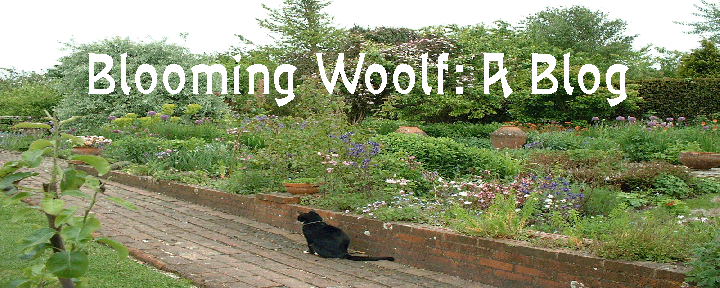Day 8—Saturday, May 19, 2012
Lovely day today, after a rather slow start. Paddington
rather crazy—after criss-crossing the station three times in search of
an ATM that wasn’t out of money, finally found one that would dispense 50 pds,
but no more. We spent an extra hour or
so getting to Richmond because of delays on the Circle Line. One of the girls figured out we could take
the Hammersmith Line out west and connect at the end of that line to the line
that ran south to Richmond. So we did. Serious
worries about how they are going to handle the Olympics if they can’t do a busy
Saturday morning. And sympathy for why
Virginia felt so isolated from London stuck out in suburban Richmond.
When we got to Richmond we went immediately up a series of
twisty little lanes until we got to Hogarth House, Leonard and Virginia’s “London”
home 1915-1924, where they founded the Hogarth Press and began their printing
ventures. The new tenants have nurtured
a wandering wisteria vine, trained to circle the blue plaque commemorating the
Woolfs’ residency which certainly softens the rather stern façade of the building.
 |
| London Girls at Hogarth House, Richmond |
Then we navigated our way over to No. 17 The Green, the house where they first
lived in Richmond, from Oct 1914- March 1915.
About all that Virginia has written about this house are memories of
huddling in the basement with the servants at night, during the aerial bombardment
at the end of WWI. There were guns at
Kew which they could hear firing as well.
That house fronts onto the huge public space of The Green, still used
today by people walking babies, eating lunch, or playing a pick-up game of soccer.
We ducked into Brewer’s Lane, a tiny lane or twitten just a
few houses down from no. 17 in order to get back to the center of town, and found
ourselves in a little shopping alley already festooned with banners for the Jubilee.
We were all getting hungry, so we piled
into a pub called the Britannia and had lunch.
Once we got back out on the High Street, we found the proper
bus to take us to Kew, but while waiting everyone was eying at least one store
they were dying to explore, so I declared a 15-minute power-shopping break.
Loaded with a few extra bags we rode about a mile and a half down to the Lion’s
Gate, the SW entrance to the park and the place where Woolf would typically
have entered. This is right near the
famous Kew Pagoda, so we starting out by inspecting it, and then just began to
wander.
Some of us made it to the Water
Lily Pond. I managed to sneak in a few
minutes at the Marianne North Museum—utterly amazing array of YEARS of
botanical painting all over the world.
The word “redoubtable” was invented for women like her; she travelled
alone to Sumatra, Brazil, India, Australia, Java, Ceylon, always painting the
rarest native species she could find.
When she came back she willed all her paintings to Kew and built a small
museum to hold them. They are hung next to
each other like mosaic tiles, literally hundreds on each wall. Astonishing.
I made friends with a woman who was standing there with her mouth open
when I walked in. We instantly bonded on
the basis of sheer amazement.
 |
| Marianne North Gallery at Kew |
Finally we all met up at the Palm house—so full of hot steam
my glasses became completely opaque when entering—an admired the “oval-shaped
flower beds” outside that are the site of Woollf’s short story, “Kew Gardens.” I also made everyone visit the Victorian
Water Lily House, with its giant lilies five feet across upon which they used
to stand small children—back in the days before child endangerment laws.
 |
| Oval Shaped Flower Beds at Kew |
Exhausted from the 4+ miles we had walked in the garden, we
piled into the train. The girls decided
they wanted to eat Indian, so we all went out together to the restaurant at the
end of the block, where they served us very well.
And now everyone is tucked in, working on their blogs and
relishing the idea of sleeping in late tomorrow. The girls have an assignment to visit
Tavistock Sq and take pictures, but otherwise are free. I think everyone is planning to shop. They’ve been very restrained so far, but
TopShop is calling.
 Despite some fairly intense development, the center of St. Ives remains much the same: a warren of small steep streets overlooking several white beaches.
Despite some fairly intense development, the center of St. Ives remains much the same: a warren of small steep streets overlooking several white beaches.











































